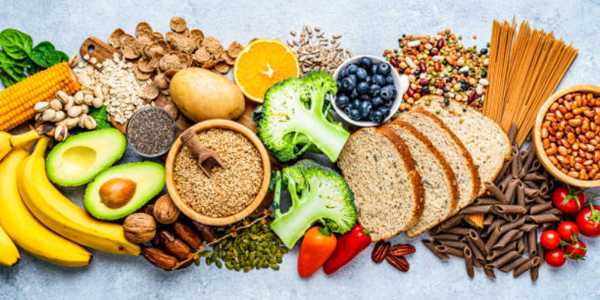How to Improve Digestion with Fiber-Rich Foods
We have all felt those stomach discomforts while even trying to digest food. Something as subtle as irregular bowel movements or bloating can destroy the quality of our lives.
We have all felt those stomach discomforts while even trying to digest food. Something as subtle as irregular bowel movements or bloating can destroy the quality of our lives. Fortunately, including fiber rich foods into your diet can do wonders for your body. So, let us take a look at how some of these foods can help.
Fiber and Digestion
As some may know, fiber cannot be digested by the human body. Unlike other carbohydrates, which subsequently transform into sugar, fibers pass through the digestive system within our bodies without being altered in any form. Because of this, fiber is certainly beneficial.

There are two types of fibers:
Soluble Fiber: Can be found in apples, lentils, and oats. Fiber helps in regulating blood sugar, lowers cholesterol and dissolves in water to form paste.
Insoluble Fiber: Fiber inhibits constipation and encourages the passage of stool. Fiber can also be found in whole grains, nuts, and vegetables.
Having a mix of both types of fiber in your diet puts you at lower risk of having constipation as well as maintaining a healthy gut.
Top Foods With High Fiber To aid Digestion
While you are free to add any fiber-rich food to your diet, some of them stand out when it comes to concern for your digestive system. Here are the top ones:
1. Whole Grains
Fiber intake is enhanced as well as the Vitamins and nutrients when you switch to whole grains.
2. Legumes
Legumes serves as a great source of fiber and protein.
Lentils contain approximately 15 grams of fiber in a cooked cup. They are great for getting your digestive tract moving, plus, they can easily be added into soups, salads, or stews.
Chickpeas are good for the gut and contain about 12 grams of fiber per cup. They also make for a delicious snack when you roast or blend them for hummus.
3. Fruits
Along with fixing your sweet tooth, fruits can also give a whole lot of fiber to your diet.
Approximately 4 grams of fiber is found in a medium apple. Most citrics are also tough to stomach straight and can easily make for a great snack on teh go.
Berries like Raspberries and blackberries have around 8 grams of fiber per cup. They taste delicious in smoothies, cereals, or even as a quick snack.

4. Vegetables
A great variety of vegetables is guaranteed great vegetarian meals that are boosted with both soluble and insoluble fibers.
Broccoli: Cooked broccoli contains roughly 5 grams of fiber per cup. The vegetable is also an excellent source of vitamins K and C.
Leafy Greens: Spinach and kale, among other vegetables, are rich sources of fiber as well as nutrients such as iron and folate.
Ways to Increase your Fiber Intake More Practically
Increasing your fiber intake should not make your life any more difficult. Here are some easy solutions:
Start Your Day Right: Oatmeal with fruits and nuts is an excellent breakfast as it is rich in fiber, thanks to the combination of soluble and insoluble fibers. This sets an excellent tone for my day.
Snack Smart: Nuts, seeds and fresh fruits are great snack options. They are easy to prepare, nutritious and will satisfy in between meal cravings.
Hydrate: Constipation is often a result of inadequate fluid intake, so drinking more water should be the first step. Water improves digestion and together with fiber, it will also relieve symptoms like bloating and gas.
Introduce Fiber Gradually: To prevent gas and bloating, make sure you do not increase your fiber intake too much too quickly. Instead, make incremental changes as your body adjusts.
The Advantages of Increasing Fiber Intake Nutritionally.
Besides the fact that digestion is improved, a diet with fiber also yields other benefits which are:
Heart Health: Soluble fiber reduces cholesterol and subsequently, heart disease.
Blood sugar control: Fiber decreases sugar absorption and further contributes to blood sugar stability. This is vital for people who have diabetes.
Weight management: Fulfills appetite which in turn restrains dietary intake.

Adopting a Fiber Lifestyle
Incorporating fiber into your diet does not have to be intimidating and here are a few meals to get you started.
Breakfast: Enjoy oatmeal topped with fresh berries and sprinkle of chia seeds.
Lunch: A big bowl of vegetable based lentil soup with a piece of whole grain bread.
Dinner: A salad of quinoa, chickpeas, cut vegetables and a dash of vinaigrette on top.
Snacks: Apple slices with almond butter or a bit of mixed nuts.
Such dietary changes will make a difference to your digestive health and wellbeing. Remember, moderation is always essential and those dietary choices made will only serve to benefit your gut.